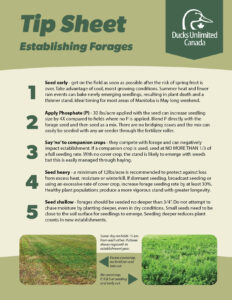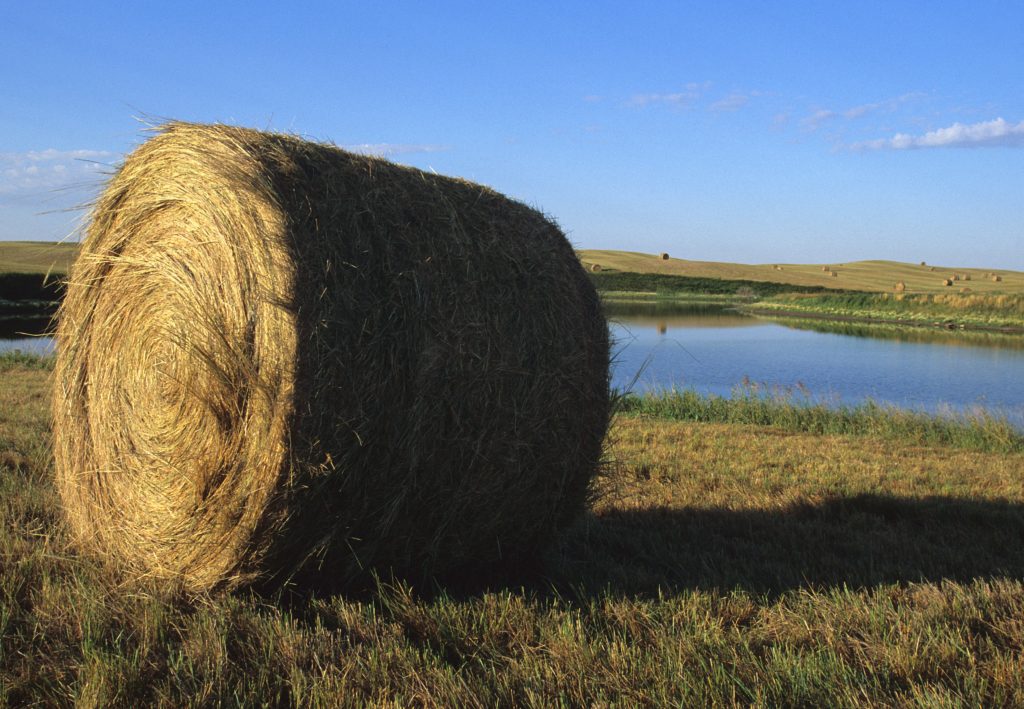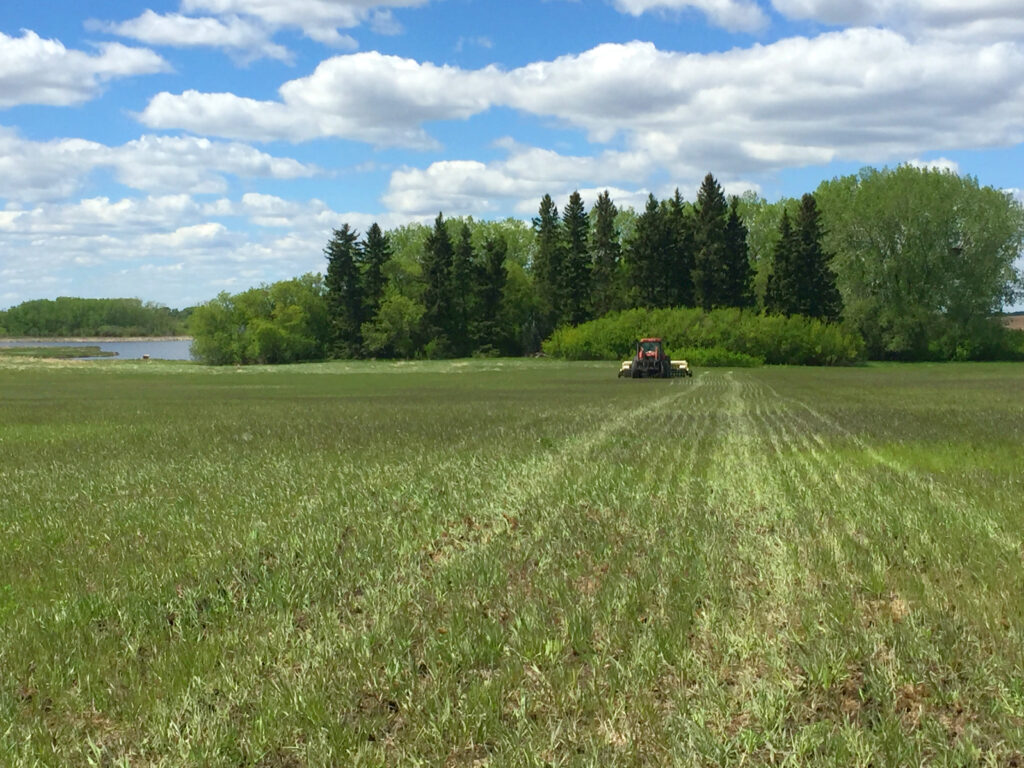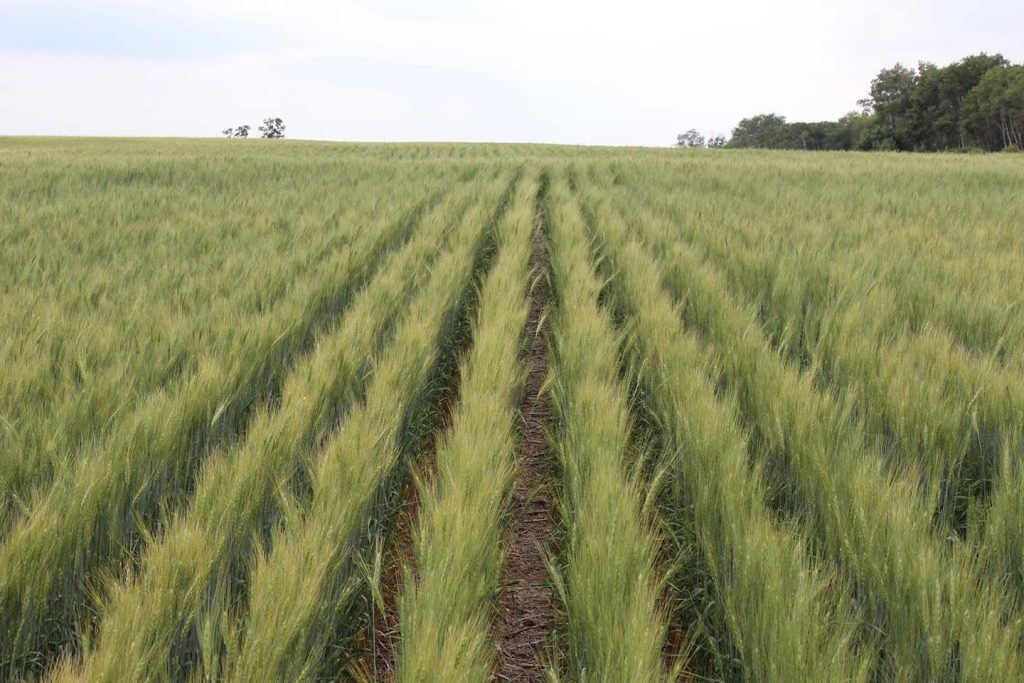Grow more forage
Get financial incentives to convert your cultivated land to hay or pasture. Ducks Unlimited Canada has helped hundreds of Manitoba farmers establish over 39,000 acres of forages since 2015. Our Forage Program is science-backed and field tested.
Congratulations to our latest Top 5 Forage Establishment winners! (read more).
Ducks Unlimited Canada’s forage program is a popular way to solve your lack of quality feed. Receive financial incentives to convert cultivated land to hay or pasture. Last year, the average payment was $12,500 with prizes awarded to the top five establishments.
Connect with Alex Griffiths about program eligibility:
By phone: 204-848-0514
Ducks Unlimited Canada uses cookies to gather data from our subscribers to provide a better user experience on the Ducks Unlimited Canada website (ducks.ca). By submitting this form, you consent to Ducks Unlimited Canada collecting web activity data when you visit ducks.ca or canards.ca. Ducks Unlimited Canada is committed to protecting your privacy and will never share or sell this information. For more information, check out our cookie policy and privacy policy.
Top 5 Forage Establishments
Each year, DUC selects the top establishments in the Forage Program based upon the highest plant density and plant height, forage diversity and lack of weeds. Meet the winners from 2023 and 2024.
Ducks Unlimited Canada Forage Program – video tips
More tips for forage success
- Seed early – get on the field as soon as possible after the risk of spring frost is over. Take advantage of cool, moist growing conditions. Summer heat and fewer rain events can bake newly emerging seedlings, resulting in plant death and a thinner stand. Ideal timing for most areas of Manitoba is May long weekend.
- Apply Phosphate (P) – 30 lbs/acre applied with the seed can increase seedling size by 4X compared to fields where no P is applied. Blend P directly with the forage seed and then seed as a mix. There are no bridging issues and the mix can easily be seeded with any air seeder through the fertilizer roller.
- Say ‘no’ to companion crops – they compete with forage and can negatively impact establishment. If a companion crop is used, seed at NO MORE THAN 1/3 of a full seeding rate. With no cover crop, the stand is likely to emerge with weeds but this is easily managed through haying.
- Seed heavy – a minimum of 12lbs/acre is recommended to protect against loss from excess heat, moisture or winterkill. If dormant seeding, broadcast seeding or using an excessive rate of cover crop, increase forage seeding rate by at least 30%. Healthy plant populations produce a more vigorous stand with greater longevity.
- Seed shallow – forages should be seeded no deeper than 3/4”. Do not attempt to chase moisture by planting deeper, even in dry conditions. Small seeds need to be close to the soil surface for seedlings to emerge. Seeding deeper reduces plant counts in new establishments.
- Use an air seeder/seed drill if possible – broadcast seeding is convenient but seeding depth varies and success depends largely on adequate rainfall. Seed near the surface faces hotter conditions which can prevent establishment. A seed drill optimizes seed-to-soil contact and ensures the crop is planted at a uniform depth.
- Seed is important – seed multiple species to ensure at least one type of plant grows in all areas of the field under varying conditions. Certified seed ensures good germination and minimal weed seeds. Some seed companies also offer establishment guarantees for their product. Ask your retailer for details.
- Seed coating – some seed companies coat their forage seed to help it flow more easily through air seeders. This coating can add significant weight to the seed, which means a 50 lb bag does not contain 50 lbs of seed. Adjust seeding rates to accomodate and seed heavy if using coated seed.
- Limit competition – preseeding weed control is essential to clean the field for optimal establishment. Ensure that chemicals will not leave residual effects on the species being planted. Cut the field early in the establishment year to prevent weeds from setting seed and to reduce competition with the forage planting.
- Remove the crop as silage – swaths can hinder seedling growth and – in extreme cases – kill all the plants underneath, leaving blank or thin strips. Best practice in the establishment year is to chop or round bale silage to prevent swaths from laying in the field for extended periods.
- Cutting precautions – do not cut below 4”-6” to ensure plant residual regrows before freeze-up. Do not take a second cut in the establishment year. Cutting alfalfa five to six weeks before killing frost depletes root reserves, stresses new seedlings and may thin the crop and decrease stand longevity.
- Do not graze in the year of establishment – although the stand may look thick and lush, the root systems are still developing and may not be fully anchoring the plant into the soil. Grazing animals can pull out the entire plant, causing stand thinning and decreased longevity.
- Insure your crop – Manitoba Agricultural Services Corporation (MASC) offers Forage Establishment Insurance with an application deadline of March 31 in the seeding year.










